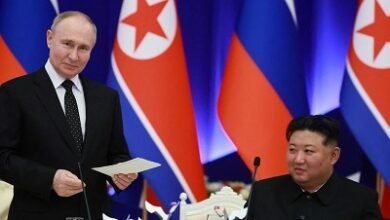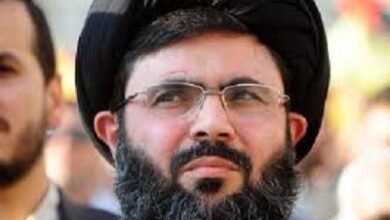Manipur- which means “Land of Jewels,” Now in War-Zone. !!!
Editorial:- S K Singh: Editor-in-Chief

WAR-REPORT:-While getting reliable information from Manipur has been difficult, images and reports from the state portray an ongoing “war zone,” with heavily armed militants continuing to roam, villagers arming themselves and a sharp deterioration in trust between citizens, governance and security.
Social media posts that manage to circumvent the internet blackout are often rife with messages of hate, division and desolation. Prices of essential commodities are skyrocketing and trucks carrying food, medicine and essential supplies have been left stranded. While it is unclear at this point how the conflict will evolve in the short-term, two trends are of particular importance to watch:
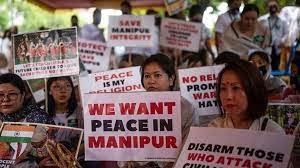
Response of the Indian State. At the start of the violence, there was a notable silence from the central government. This elicited criticism from opposition parties, which have accused the BJP of focusing more on the upcoming elections and using silence to foster violence.
Manipur, which means “Land of Jewels,” consists of a valley surrounded by mountain ranges. The state is home to 39 ethnic communities following different faiths, including Hinduism, Christianity and Islam, as well as Indigenous religious traditions such as Sanamahi. Opposition to the manner of Manipur’s merger with India in 1949 laid the groundwork for the nascent stages of resistance and separatist movements and remains at the heart of the dispute between New Delhi and many restive portions of the Northeast.
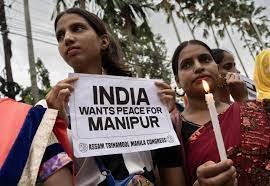
To quell this resistance, the Indian government imposed the controversial Armed Forces Special Powers Act in 1958. The act provides broad-based powers for the military and paramilitary groups to “[maintain] public order,” in “disturbed areas,” which have been primarily applied to regions of the Northeast and Jammu and Kashmir.
The act has been criticized by rights groups and contributed to a deep trust deficit between the state and central government in Manipur, while the central government argues it has been necessary for maintaining order in areas with a history of insurgency — some predating India’s independence. In the Northeast (and elsewhere), the central government has also emphasized the threat of foreign support for separatist movements.

Today, the region features multiple conflicting claims to ethnic and communal homelands — and armed insurgent groups to defend those claims. In Manipur, there are at least four valley-based armed groups, several Naga groups and nearly 30 Kuki armed insurgent organizations. The proliferation of armed groups — at one point estimated to stand at around 60 — contributed to the sense of a “war within a war” in the state.

Those closely connected with political power took advantage of the tumultuous situation, and the state became the site of rampant gun-running and narco- and human-trafficking. Armed groups frequently back candidates in state elections. In 2022, two Kuki insurgent groups issued statements in support of the Bhartiya Janata Party (BJP), and in 2019 images on social media reportedly showed a letter written by armed groups to Indian Home Minister Amit Shah asking for a party ticket to be given to a candidate of their choice — although the armed group later disputed this.
Northeast politicians have reported intimidation by opposing armed groups, and civil society organizations in Manipur emphasized that the 2022 elections were overshadowed by “open intimidation” from militant groups and violence across polling stations. This has led to “democracy at gunpoint” in this fragile region.

The most recent violence began after the Manipur High Court asked the state government to consider Scheduled Tribe status for the Meitei community, which is the majority population in Manipur. This status would ensure protection within the Indian Constitution and allow the Meitei expanded access to benefits, including reserved seats in government.
The Meitei community in Manipur had long requested this status. However, there were strong concerns that such a move would deepen ethnic divisions, particularly with the Kuki and Naga Indigenous communities. Indeed, soon after the court announcement, a rally was held in protest by the All-Tribal Students Union of Manipur on May 3.
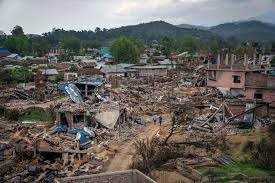
The violence began that same day, when reports surfaced that the Anglo-Kuki War Memorial Gate had been burnt down. This led Kukis to burn several villages inhabited by Meitei communities in Churachanpur, which in turn prompted retaliation by the Meitei, who reportedly torched several localities belonging to the Kuki community in the Imphal Valley areas, leading to several casualties.
While the protests may be identified as the most immediate trigger of violence in Manipur, intra-Indigenous community tensions had been rising in the state for several years. The current state government’s handling of Indigenous land rights issues, for instance, has been perceived as targeting the Kuki communities primarily living in the hill areas surrounding the capital valley. Efforts to survey reserved forests in the hill regions was said to be an effort to reduce poppy cultivation, but has resulted in evictions in Kuki villages.
Meanwhile, another point of contention is the current land imbalance between Indigenous communities: Meiteis cannot buy lands in the previously mentioned hill regions, but Kukis and other tribal communities can buy lands in the valley.

Additionally, the influx of refugees following the 2021 military coup in neighboring Myanmar — particularly those from Sagaing region, who have strong ties with the Kukis — has also created a greater sense of insecurity for the Meitei Indigenous community.
Though the real decision-making in the conflict lies with those who control the guns, drugs and politics, the ones most affected in both the communities are women and children. The identities of different ethnic communities were weaponized in the current conflict to suit the agenda of a few.
Source:USIP






